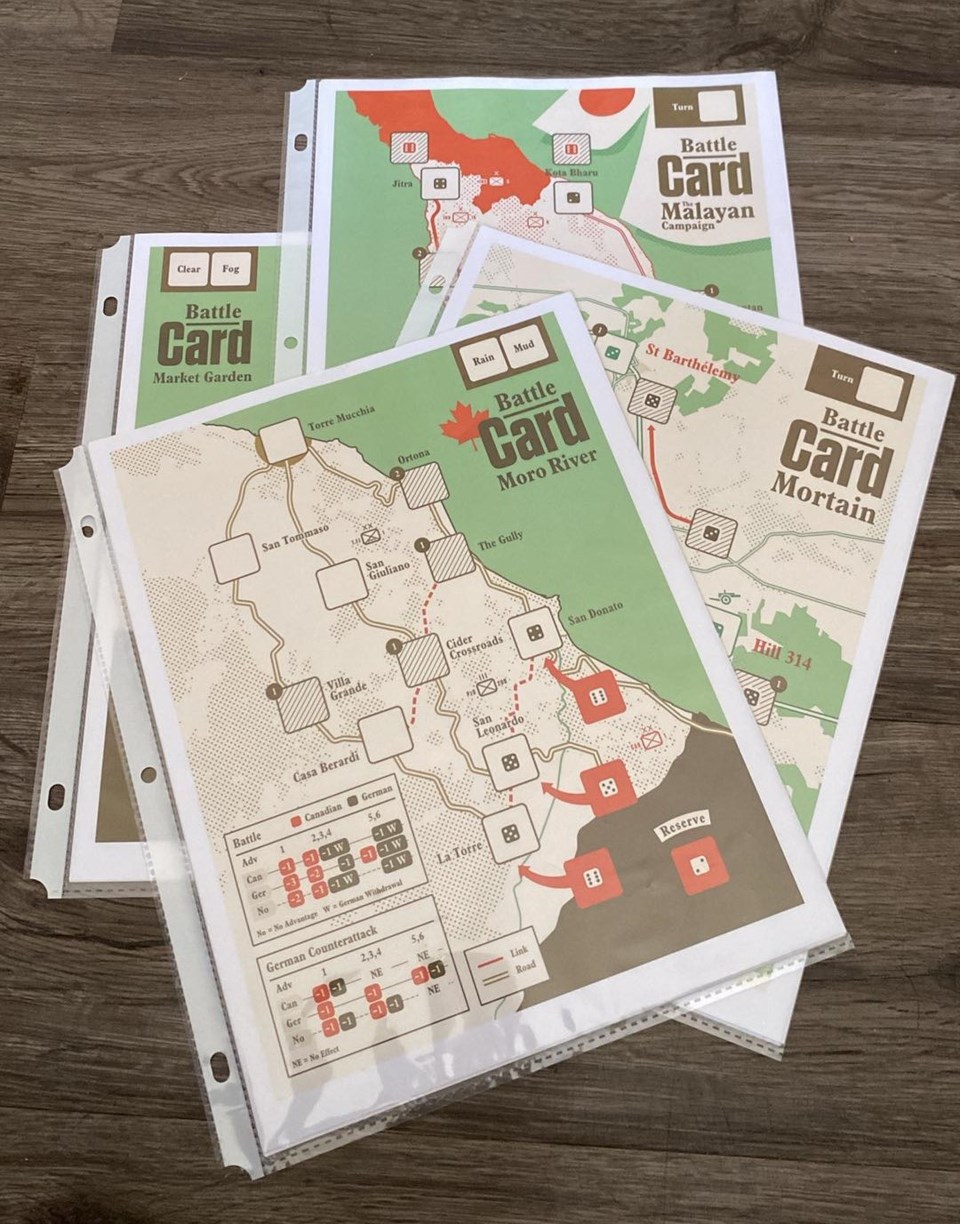YORKTON - When it comes to print and play games simplicity of printing is rather high on the list of attributes which attract this crafter’s attention.
While I finding it surprisingly relaxing to sit at the game table upstairs and use an exacto knife cutting cards, if the print job is just an 8x11 sheet and you are ready to go, that’s fine by me.
That is the first great thing about Battle Card from the designer team of Nils Johansson, and David Thompson. The game and rules can be on a single sheet, although if you print both full size things are a bit easier in games terms.
The game was published by Postmark Games. It was co-designed by Thompson and Johansson. In addition, Johansson did all of the artwork and graphic design for the game.
After that simple print, put in a sleeve for survivability, grab some D6 disc in various colours and you are ready to replay some battles from the Second World War.
To-date there are four battles on four sheets, in colour, or a lower ink black and white.
The Battle Card of greatest interest to readers will likely be the battle of Moro which includes Canadian forces. This is the one that initially caught my eye.
“The Battle of Moro River was a key engagement on the Adriatic coast during the Italian Campaign. You take the role of Canadian forces and must battle your way through tough German defences and challenging winter conditions while trying to advance through the Moro River Valley,” notes the ruleset.
There is also a Malayan Campaign, Mortain and Market Garden battles in the set.
The game is about simplicity, it’s dice as troops in general, yet you get the ‘feel’ of the tension of battle, a goal for the designers noted Thompson via email.
“The Battle Card series was created as an effort to distill complex military operations during WW2 into extremely concise models,” he said.
“The idea is that each game gives the player a zoomed-out view -- generally at what is called the ‘operational scale’ -- of a conflict, and presents the player with a small number of key decisions that we felt accurately reflect the core elements of the operation. The games feature a great deal of uncertainty, as captured in combat dice rolls, but they also force the player to make very important decisions about how they approach each operation. By playing through these very short games, we want the players coming away with a better appreciation for the battle by having to make some of the same key decisions as the commanders did historically.”
What is surprising is just how invested a player becomes in the process of decision making. There is more tension here than I expected upon printing the sheets.
At the same time this can be a coffee break solo game as they are quick.
“They play in less than 10 minutes, so you can get started quickly, play through the game, understand the impact of the choices you made, and play again immediately,” noted Thompson.
“They are also extremely rules-light. The entire ruleset fits on a half-sheet of paper. The intent for Battle Card was always to provide a small, easy-to-craft package.
“Finally, what I really enjoy about each game in the series is that they each focus on a core historical concept. For example, one conveys the importance of artillery support, while another is all about orchestrating a fighting retreat.
“I’m proud that we were able to fit some many different concepts like this into simple, short, easy-to-craft games.”
So, what is the most unique mechanic within the rules in Thompson’s view?
“I really like the way we use dice as military units in the game,” he said. “When we were conceptualizing the core game play we knew we needed a component that was versatile, but also something that we could assume every player already had without the need for crafting. Dice were the obvious solution.
“Using them as military units allows us a lot of flexibility in the relative strength of those units.
“In the game, military units have a strength ranging from 1-6, matching the dice face of the dice used to represent them. During the course of the game, through combat, reinforcements, etc, those dice face will change to match the strength of the units.”
All told this is a wonderfully designed, simple to play, game set with a lot of ‘feeling’ still there for players to experience.
If you like solo games and like PnP, this is a must-have.






